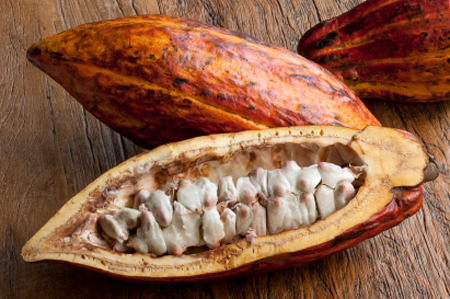 (Agrimoney) – Cocoa futures plunged 5%, leading a slump in soft commodity values amid “indiscriminate” selling which also took robusta coffee futures to a five-year low, besides seeing heavy liquidation in share and oil markets.
(Agrimoney) – Cocoa futures plunged 5%, leading a slump in soft commodity values amid “indiscriminate” selling which also took robusta coffee futures to a five-year low, besides seeing heavy liquidation in share and oil markets.
Cocoa futures for March in New York tumbled by 4.5% to an eight-month low, for a spot contract, of $2,800 a tonne.
The contract’s London-traded and sterling-denominated peer, given extra pressure by strength in the pound, stood down 4.9% at one point at £2,039 a tonne.
The declines came amid a broad sell-off on financial markets blamed on the uncertainty provoked by tumbling oil prices, concerns over China’s slowdown and indeed over world economic growth, for which the International Monetary Fund on Tuesday trimmed its growth forecast by 0.2 points to 3.4%.
Shares closed down by 3.7% in Tokyo, and stood 3.9% lower in late deals in London, while shedding 2.5% in New York.
‘In the firing line’
Within the agricultural commodities complex, softs took the brunt of the selling – a factor attributed by some observers merely to speculators’ positioning in the different complexes.
“Softs are in the firing line more probably just because speculators have a large position in them to sell.””The selling looks pretty indiscriminate to me,” a UK-based analyst told Agrimoney.com.
While hedge funds had a net short of more than 340,000 lots in the main US-traded grains and soy contracts as of last week, in New York-listed soft commodities they held a net long of more than 150,000 lots.
‘Another deficit ahead’
A London trader at a major commodities house highlighted that New York raw sugar futures were down some 3.5% “despite bullish fundamentals”.
Indeed, separately on Thursday, Commerzbank highlighted that “another deficit on the global sugar market is expected in the 2016-17 season”, after a shortfall this season estimated by Platts Kingsman at 5.3m tonnes.
“Global sugar consumption looks set to achieve annual growth rates of 2-3% until at least 2017,” Commerzbank said, adding that “it is unlikely that the current supply in 2016-17 will be sufficient to meet this demand.
“In India, the second-largest sugar producer, a decline of over 2m tonnes to 24.5m tonnes [in sugar output] is envisaged after a poor monsoon season in 2015 hampered planting of sugar cane.”
Ghana recovery?
Coffee futures fell heavily too, by 3.8% to 111.30 cents a pound in mate morning deals in New York for the best-traded March arabica contract, given extra pressure by an official forecast from Brazil of a potentially record harvest this year.
London-traded robusta coffee futures hit $1,348 a tonne for January delivery, the lowest for a spot contract since June 2010, while the better-traded March lot fell by 3.3% to $1,366 a tonne.
However, it was cocoa which topped the sell-off league, with the pressure from macro-market selling compounded by ideas of a sharp recovery in output in Ghana, the second-ranked producing country after neighbouring Ivory Coast.
Market rumour has it that Cocobod, Ghana’s cocoa regulator, has bought 590,000 tonnes of cocoa so far this season, which began in October – a jump of 20% year on year.
‘Sell stops triggered’
And downward pressure on prices gained extra strength after March futures fell below lows reached last week, which had been seen by some investors as a key technical mark.
“When futures went below the previous low, sell stops triggered, and the weaker longs got out,” the trader said.
Ironically, the sell-down in cocoa came even as Barry Callebaut, the world’s top chocolate maker, bemoaned the rise in prices of the bean late last year for cutting the so-called combined ratio.
This ratio compares the value of cocoa processing products, butter and powder, with the cost of the raw beans to given an indication of grinding margins and has been, at 2.85, at a historically weak level, the Swiss-based group said.
“After a temporary recovery at the end of September, the combined ratio again took a downturn in recent weeks,” Barry Callebaut said, adding that the “challenging cocoa market environment continues”.
However, weak cocoa prices, now down 13% so far in 2016, stand to boost grinding margins.




